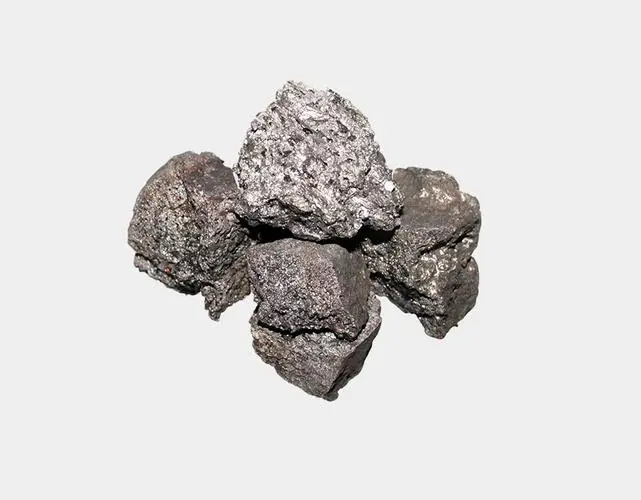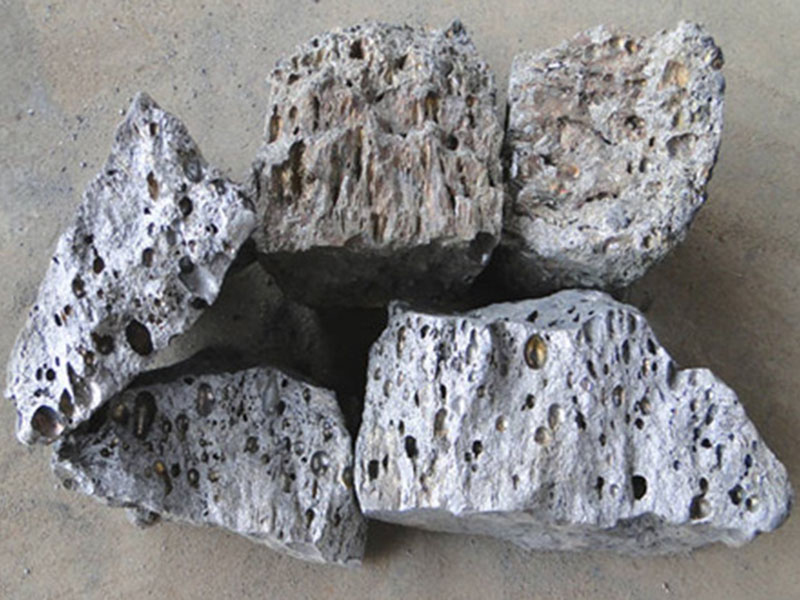Ferro Phosphorus is an iron alloy rich in phosphorus elements, commonly used in steelmaking as a smelting material. Adding an appropriate amount of ferro phosphorus in steelmaking can enhance the fluidity of molten steel. It is crucial to strictly control the phosphorus content when adding ferro phosphorus to ensure its wear resistance and brittleness. Adding around 0.15% phosphorus can significantly improve the wear resistance of steel, increase its tensile strength, enhance its performance and surface quality, and improve thermal conductivity and heat resistance.

Advantages of Ferro Phosphorus:
Enhances fluidity of molten iron: Ferro phosphorus alloy, with controlled phosphorus content, exhibits wear resistance and brittleness.
Overall improvement in wear resistance: Adding about 0.15% phosphorus significantly enhances the wear resistance of cast iron.
Increases tensile strength of steel, and improves performance and surface quality of castings.
Improves thermal conductivity and heat resistance: The network-like distribution of phosphorus eutectic effectively improves thermal conductivity and heat resistance. It ensures uniform wear surfaces and reduces spark generation during friction.
Applications of Ferro Phosphorus:
Ferro phosphorus powder can substitute zinc powder, mainly because zinc powder, as a corrosion-resistant material, is relatively expensive. Using ferro phosphorus powder instead of zinc powder reduces smelting costs and provides comparable corrosion resistance. The principle behind this substitution lies in utilizing the cathodic protection properties of ferro phosphorus powder. In practical smelting, ferro phosphorus powder forms conductive paths, reacts with significant corroding mediums in the air, and thereby endows the produced steel with certain corrosion resistance.
Additionally, combining ferro phosphorus powder with zinc powder in smelting can significantly increase the utilization rate of zinc powder, effectively saving smelting costs. The effectiveness of replacing zinc powder with ferro phosphorus powder generally ranges from 20% to 50%, depending on factors such as operational inputs, product demands, etc.
Ferro phosphorus powder, when used in combination with metallic zinc, exhibits non-toxic, odorless, and tasteless characteristics. It can be used in the production of conductive and thermal products. In the ferroalloy steelmaking industry, ferro phosphorus powder is an essential smelting material. Its application in coating corrosion resistance reduces the zinc fumes generated during welding and cutting, thereby improving the working environment and labor protection. Moreover, it enhances the adhesion of conductive materials in conductive coatings, effectively improving the welding characteristics of zinc-rich coatings.
Ferro phosphorus primarily shines in the steelmaking industry. Compared to silicon iron blocks, ferro phosphorus can absorb quickly, resulting in faster and better reactions. Its rapid deoxidation capability enables the quick addition of a certain proportion of ferro phosphorus in molten steel, effectively saving deoxidation time and costs, thus significantly improving the quality of finished steel products and enhancing enterprise profitability.
During practical application, ferro phosphorus also serves as a slag collector, effectively aggregating and filtering impurities in molten steel to improve its purity. Its rapid and uniform melting speed in molten steel shortens the deoxidation interval, thus enhancing steelmaking efficiency. With a high recovery rate, ferro phosphorus can be reused, reducing manual labor intensity. These outstanding features make ferro phosphorus increasingly favored by steelmakers.

How to Select Ferro Phosphorus?
Ferro phosphorus is produced through professional electric furnace smelting, making it convenient to use. Its effectiveness in melting is superior to that of block-shaped ferroalloys, making it more compatible with molten steel and exhibiting a faster phosphorus-enhancing effect. Therefore, there are numerous manufacturers of ferro phosphorus in the ferroalloy market. Selecting better-quality ferro phosphorus poses a challenge for many purchasing companies.
Ferro phosphorus with low impurity content is considered high-quality smelting material, as it effectively reduces slag quantity during smelting, increases recovery rates, and lowers smelting energy consumption. To ensure product quality, attention should be paid to controlling the phosphorus-to-iron and phosphorus-to-manganese ratios when charging ferro phosphorus into furnaces. The smelting of manganese ferroalloys is a process of molten reduction. The metallurgical characteristics of minerals significantly affect ore melting, reduction, and electric furnace operations.
High-priced oxides undergo reduction, altering mineral structures and leading to some ores undergoing reduction and pulverization. Pulverization disrupts the permeability of the charge layer; thus, ores with high rates of pulverization are unsuitable for submerged arc furnaces.
Early slagging of ferro phosphorus alters the electrical conductivity structure of the upper furnace charge and the temperature distribution in the furnace chamber. Ferro phosphorus with high SiO2 content has a lower melting temperature and early slagging. The low activity of MnO and SiO2 in the initial slag is not conducive to the reduction of manganese and silicon. Conversely, ferro phosphorus with high CaO and MgO content is more suitable for producing ferrosilicon alloys. The free MnO (not in the form of silicate or aluminosilicate) in ferro phosphorus exists in the form of phosphorus manganite during melting, balancing with the MnO dissolved in the initial slag, which greatly promotes manganese reduction. Added silicon carbide is easier to reduce and produce silicon in the furnace compared to silicates.
Mineral composition and structural changes with temperature must be considered in raw material ratio calculations. Soft phosphorus iron minerals, mainly composed of MnO2, have high oxygen content, requiring additional reducing agents during smelting. Crystalline water in hard phosphorus iron needs energy for decomposition. To maintain carbon balance in the circuit, it is advisable to use low-oxygen-content ores as much as possible. Experience shows that using brown phosphorus iron yields better results than using soft or hard phosphorus iron. Sulfur is the surface-active substance of slag melt, catalyzing the molten reduction of MnO.
http://www.cntzh.com/ Anyang Taizhihe Trading Co.,LTD
